Bio 1A- Information Flow, last midterm was shit
1/65
There's no tags or description
Looks like no tags are added yet.
Name | Mastery | Learn | Test | Matching | Spaced |
|---|
No study sessions yet.
66 Terms
gametes
sperm and egg cells
centromere
“waist” where chromatids meet in the middle
chromatid
one of the two identical halves of a chromosome after DNA replication
progeny cells
daughter cells- after separation into these cells, chromatids are called chromosomes again
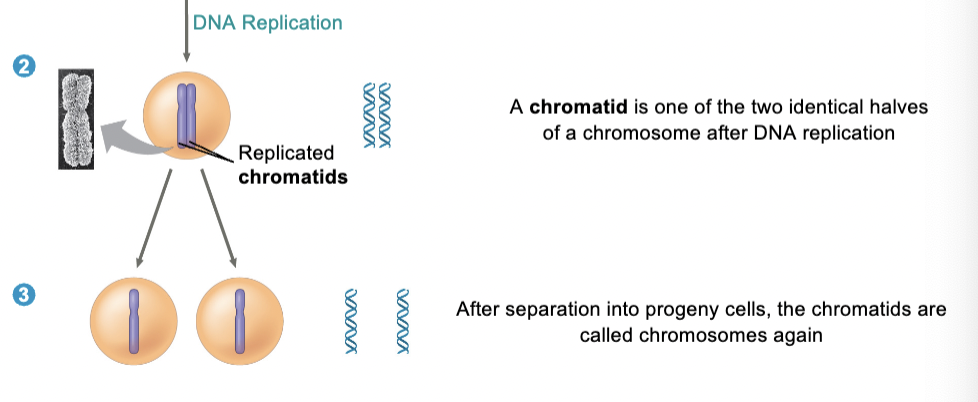
Phases of cell cycle
Interphase —> mitotic phase
Phases of interphase
G1 —> S —> G2
(G phases grow the cell, S phase = DNA synthesis)
Phases of mitotic (M) phase
mitosis —> Cytokinesis
(mitosis distributes chromosomes into two identical nuclei, Cytokinesis divides cytoplasm)
Stages of Mitosis
prophase, metaphase, anaphase, telophase
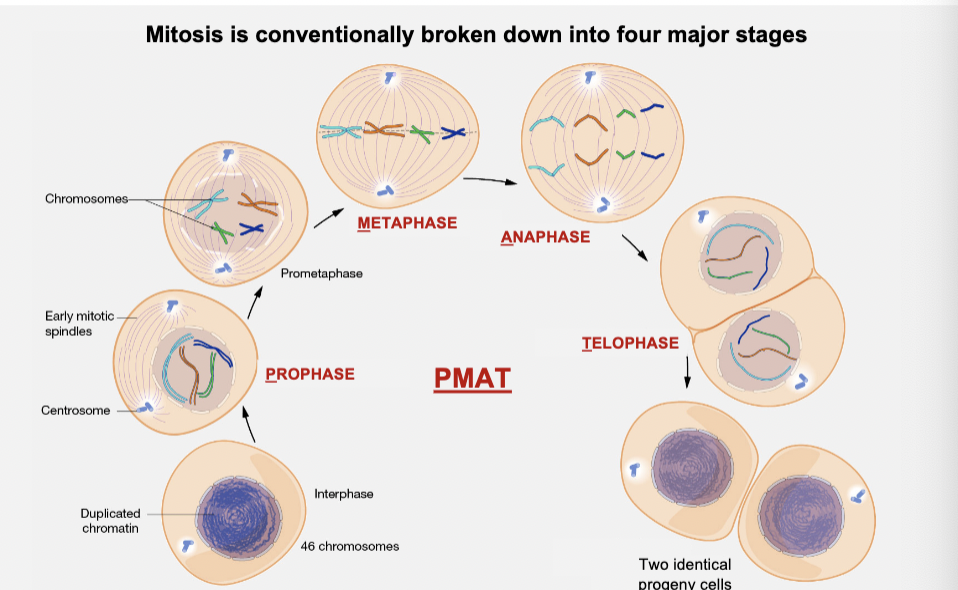
cell cycle checkpoints
G1, G2, M
-G1 is most important, and rerouts unready cells to Go
-M: cell receives stop if any chromosomes aren’t attached to spindle fibers in prometaphase
Somatic cells
cells in the body that are diploid
diploid
contains two complete sets of chromosomes, one from each parent (2n = 46 total chromosomes arranged in 23 pairs)
haploid
having a single set of unpaired chromosomes (23, or n); ex- gametes (sex cells)
Meiosis
-5 stages including interphase
-occurs in somatic cells
-purpose is sexual reproduction
-produces 2 diploid daughter cells
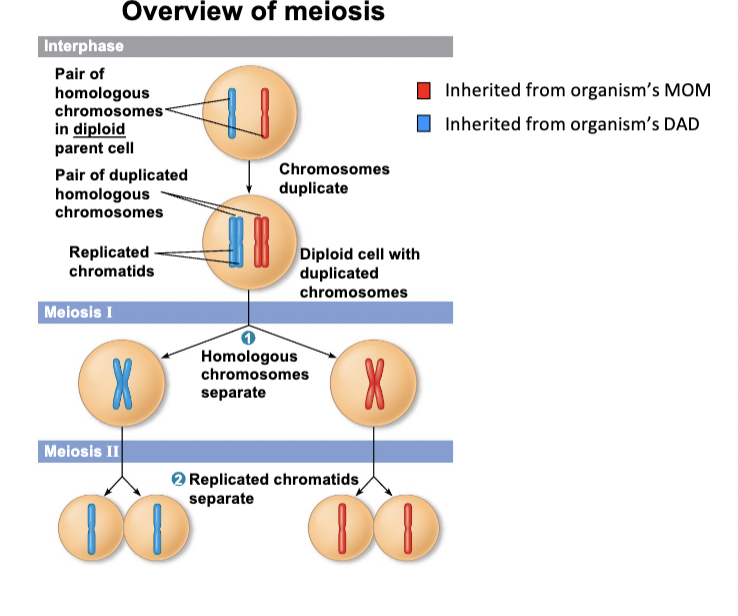
Meiosis I
separates homologous chromosomes, PMAT I
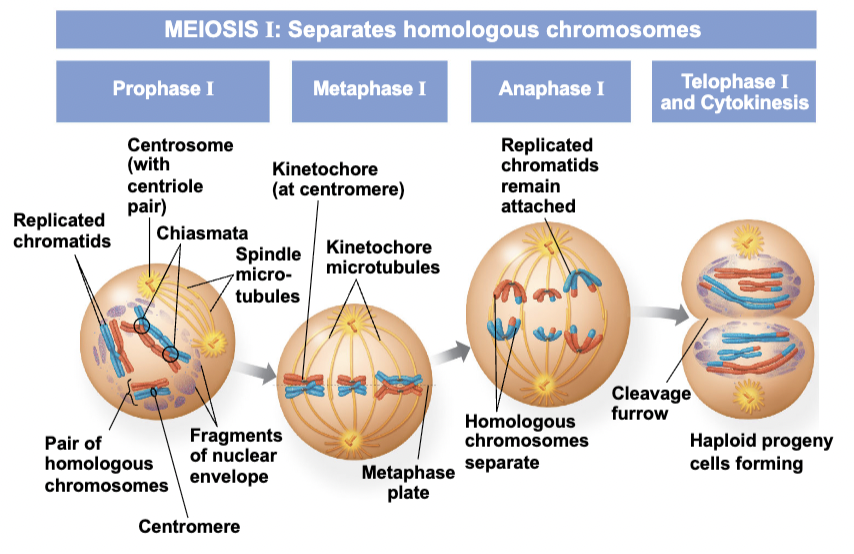
Meiosis II
separates replicated chromatids, PMAT II
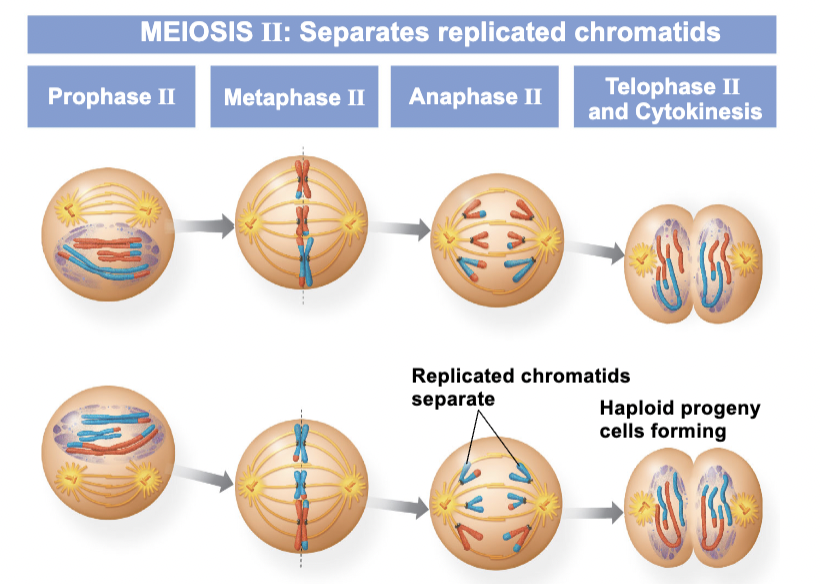
chiasmata
the X shaped points where homologous chromosomes physically exchange genetic material during meiosis (crossing over)
kinetochore
protein which is the attachment point for spindle microtubules during cell division
(ensures sister chromatids are accurately separated)
cohesion proteins
protein which acts as a glue, holding sister chromatids together from the end of replication until the anaphase of cell division
how do the progeny cells of Mitosis differ from those of meiosis?
mitosis: 2× 2n progeny cells
meiosis: 4× 1n progeny cells
4 laws of meiosis
law of segregation
law of independent assortment
crossing over
slot machine
law of segregation
maternal and paternal copies of a given chromosome SEPARATE during meiosis and end up in different gametes at random (with = probability)
when an organism makes gametes, each gamete receives just one copy of each chromosome, which occurs randomly
probability of receiving the mat/pat version of a chromosome is completely random
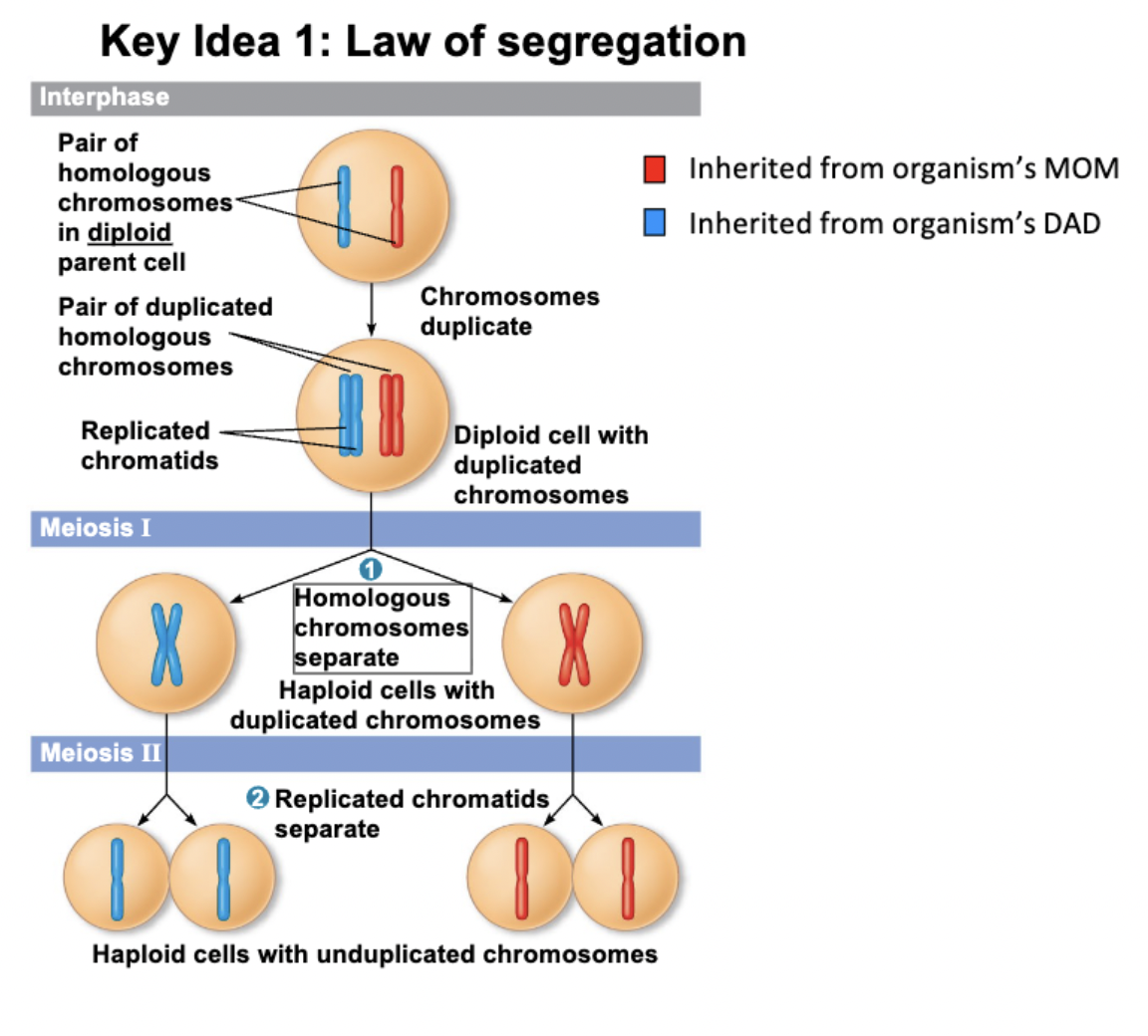
law of independent assortment
maternal and paternal chromosomes of any homologous pair segregate into gametes INDEPENDENTLY of all other homologous pairs of chromosomes
the pairs of homologous chromosomes get segregated into gametes independently of one another
the version of chromosome 1 selected has no effect on which version (mat/pat) of the other chromosomes will be selected
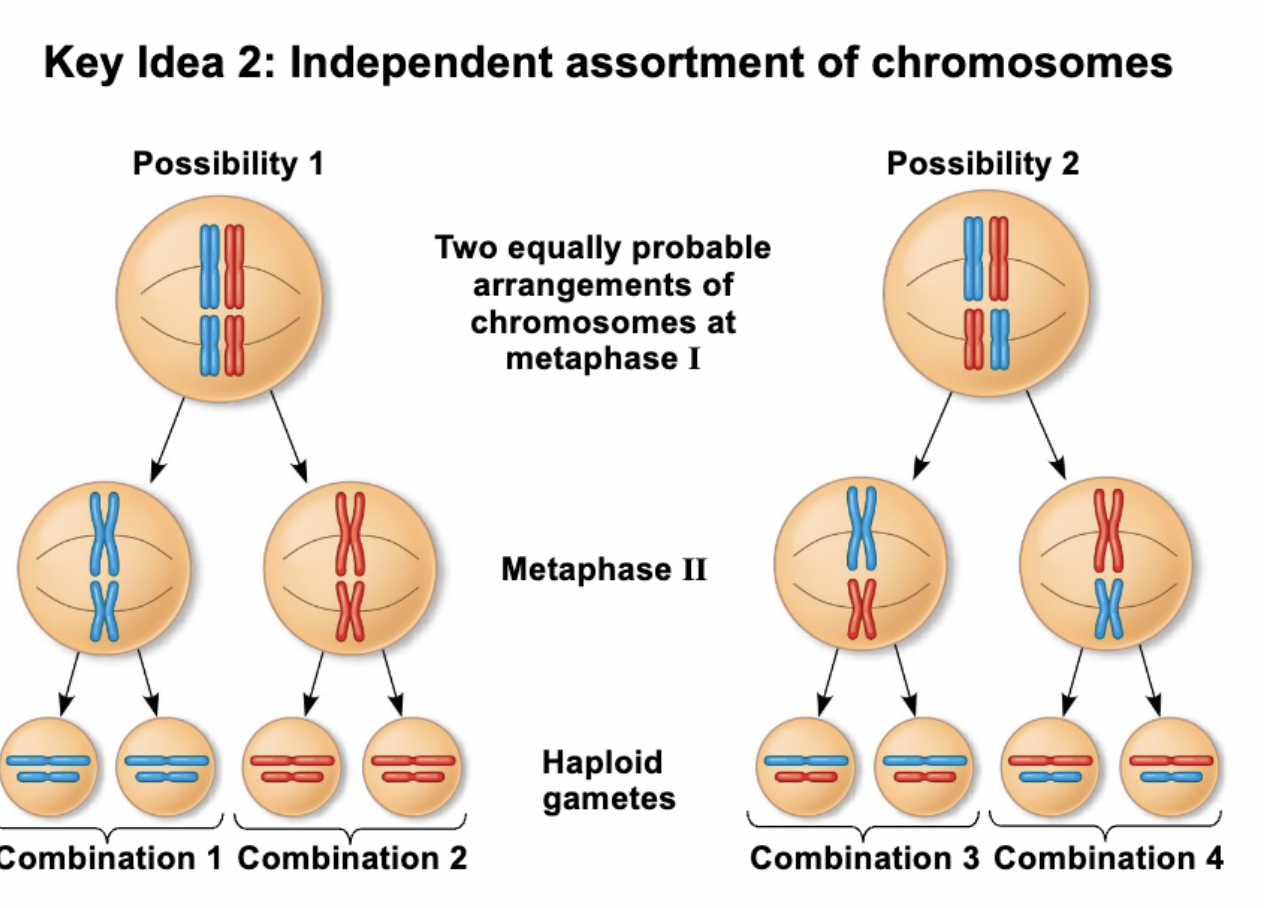
crossing over
maternal and paternal chromosomes exchange genetic information during prophase I
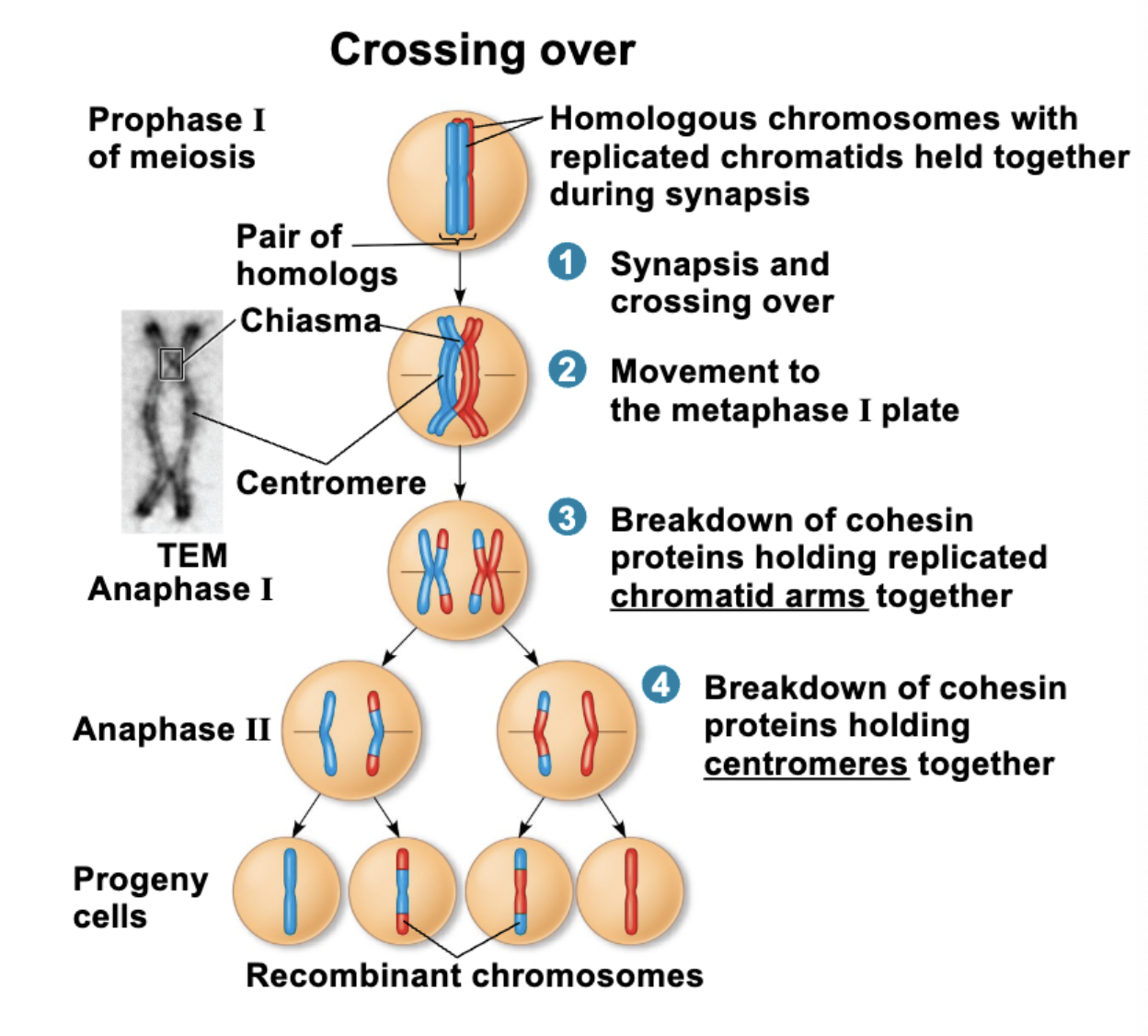
slot machine/meiosis comparison
meiosis is like a slot machine that produces 4 genetically distinct HAPLOID cells
synapsis
process in prophase I of meiosis where homologous chromosomes pair up tighly to form a structure called a tetrad, held together by the synaptonemal complex
allows for crossing over to occur at chiasmata
combinations possible when chromosomes assort independently into gametes
2^n, where n = haploid number
for humans, n=23
random fertilization
any sperm can fuse with any unfertilized egg, adds to genetic variation
particulate hypothesis of heredity
traits are passed down through discrete, indivisible units called genes, rather than blending together (previously held idea)
two laws that Mendel described
law of segregation and law of independent assortment
characteristics that make pea plants good genetic models
true breeding- specific traits are passed to all subsequent generations
short generation time
lots of progeny
mating can be controlled; self pollinate/cross pollination
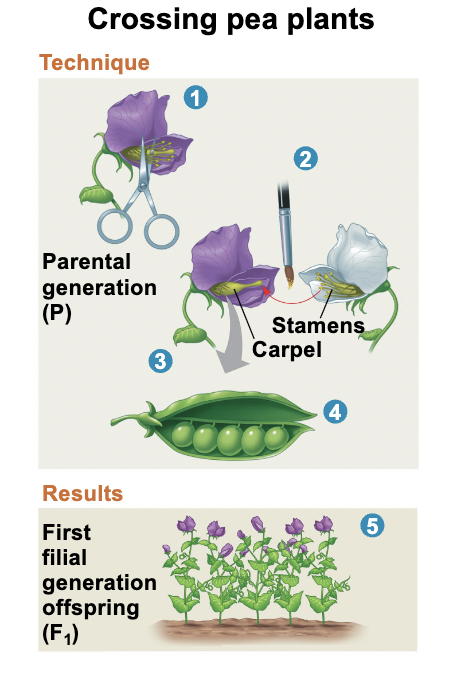
allele
alternative versions of genes- each progeny inherits one allele from each parent
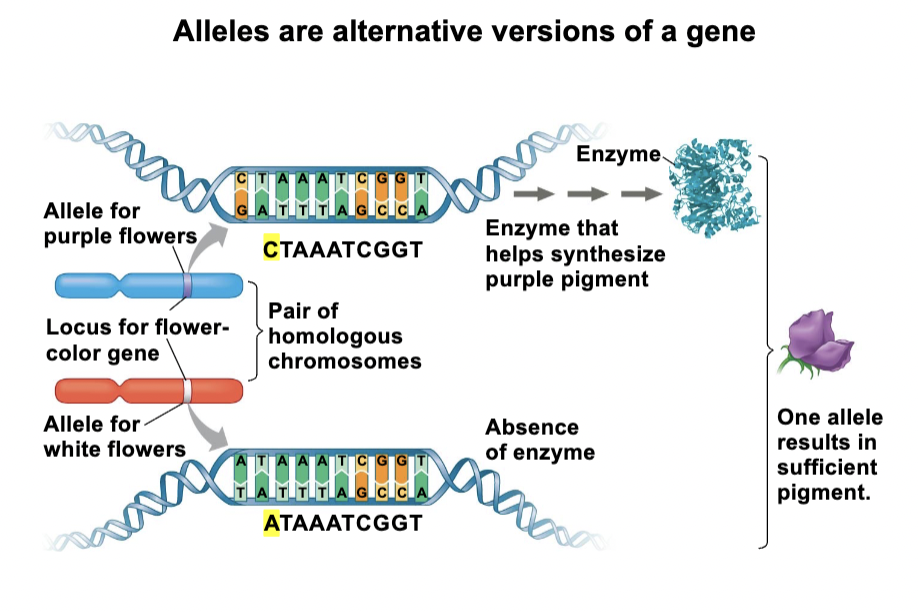
law of segregation applies to alleles
two alleles separate from eachother during gamete formation and end up in gametes
an egg or sperm gets only one of the two alleles present in the parent
this is explained by the behavior of chromosomes in MEIOSIS
phenotype vs genotype
phenotype is the result while genotype is the gene ratio from parents
can be determined from a test cross with a recessive phenotype (pp)
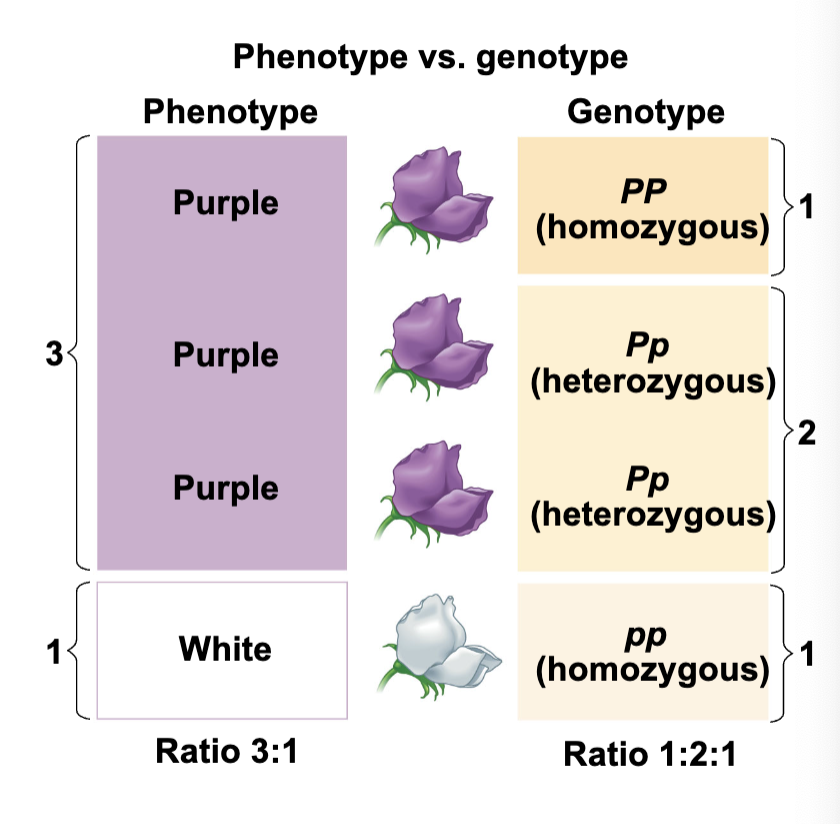
dihybrid cross
YYRR x yyrr
result: phenotypic ratio of 9YR: 3Yr: 3yR: 1yr
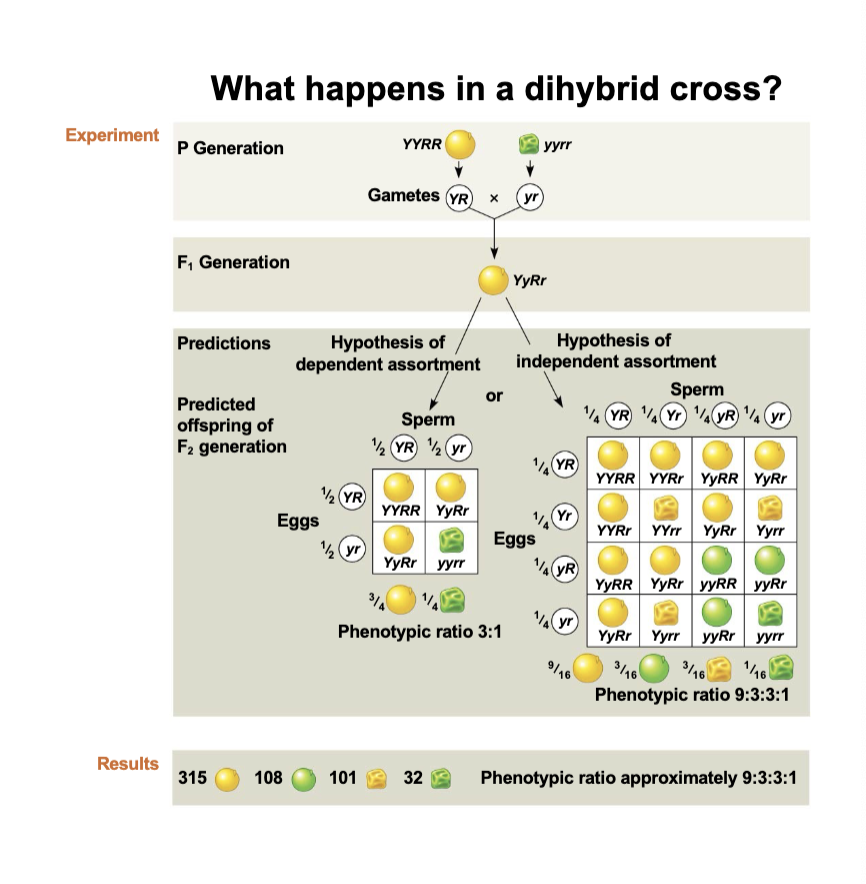
Mendel’s law of independent assortment
each pair of alleles segregates independently of any other pair of alleles during gamete formation
MEIOSIS: each pair of homologous chromosomes follows the law of segregation without influence of other chromosomes
applies only to genes on different nonhomologous chromosomes, or those taht are far apart on the same chromosome
multiplication rule
probability that 2+ independent events will occur together (this AND that) is the product of their individual probabilities
addition rule
the probability of any one of 2+ mutually exclusive events will occur (this OR that) is the sum of their individual probabilities
homozygous
identical alleles of a particular gene
heterozygous
different alleles of particular gene
incomplete dominance
neither allele is completely dominant
codominance
two dominant alleles affect the phenotype in separate, distinguishable ways
epistasis
phenotypic expressiion of one gene affects that of another
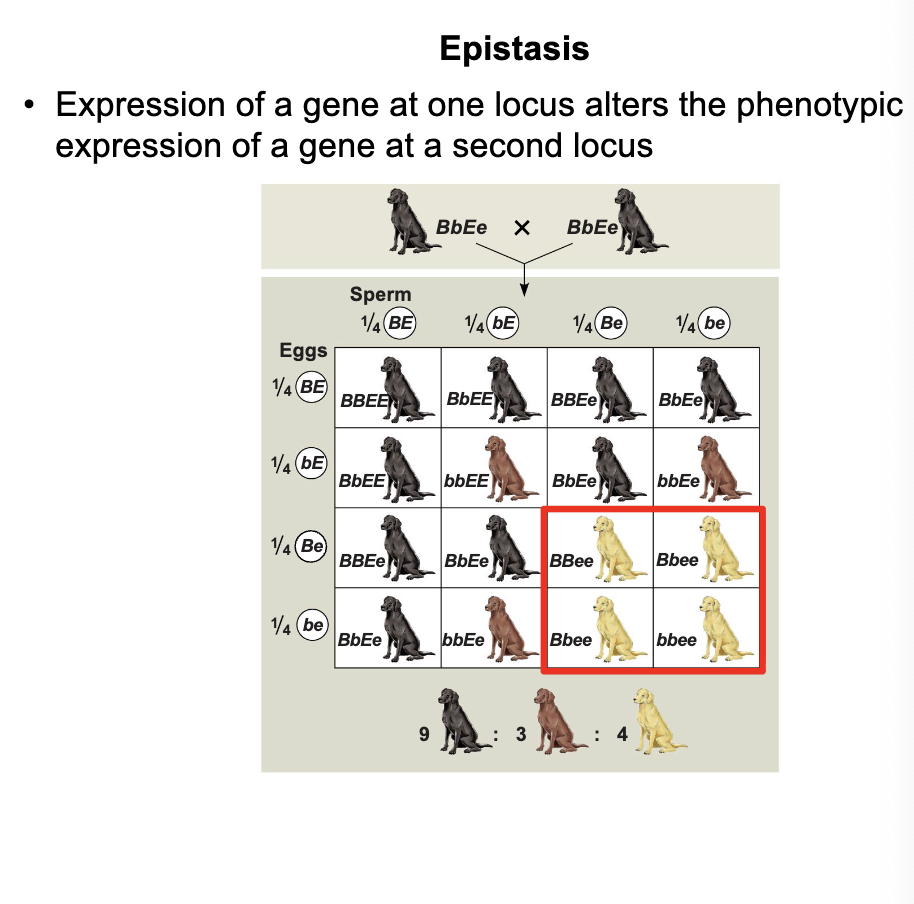
polygenic inheritance
additive effect of 2+ genes on a single phenotypic character
quantitative variation (varies in a population along a continuum) indicates polygenic inheritance
sex linked traits
characteristics caused by genes located on sex chromosomes (X or Y) instead of autosomes
gene mapping
various techniques, including genetic linkage mapping to determine relative positions based on recombination frequencies, fluorescent in situ hybridization (FISH) to visualize specific DNA sequences, and genome sequencing to identify the precise DNA sequence and gene locations
Chromosome theory of inheritance
genes are located on chromosomes; chromosomes are carriers of genetic information and responsible for mendelian inheritance
wild type (wt) or (w+)
natural, non mutated form of a gene or organism most commonly found in a natural population
Morgan’s discovery
white eyes correlates to the sex of flies because it’s located on the X and Y sex chromosomes; helped develop the theory of inheritance
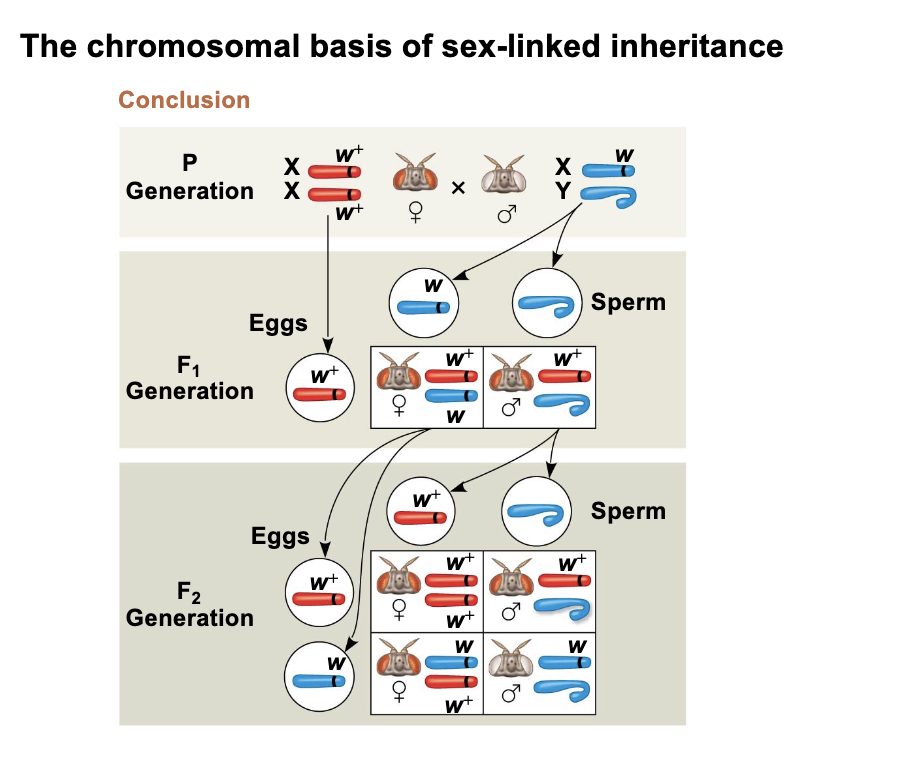
sex linked genes
genes on sex chromosomes that exhibit unique patterns of inheritance
X linked genes in humans
some disorders are caused by recessive alleles on the X chromosome in humans; female needs to be homozygous and a male needs only one copy of the allele (hemizygous) to be expressed
X inactivation in female mammals
one of the 2 chromosomes in each cell randomly inactivates during embryonic development
the inactive X condenses into a Barr Body
shown as genetic mosaic
Barr body (aka X- chromatin)
tightly coiled DNA of inactivated X chromosome; appears as small, dark staining, condensed structure attached to nuclear envelope
most genes on barr bodies becomes inactive
Are mitochondrial genes randomly inherited
No- not mendelian
mitochondria have different genomes than chromosomes or nucleus: not segregated during meiosis
passed through cytoplasm of egg = maternally inherited
linked genes
genes that tend to be inherited together
often near eachother on the same autosome
observed by Morgan in his fruit fly experiment
dihybrid testcross
crossing an unknown genotypic individual for two traits with a double recessive individual
determines genotype of unknown
demonstrates independent assortment (if 1:1:1:1)
recombination frequency
percent likelyhood that recombination between 2 genes happens
<50% means genes are linked
the percent of recombination frequency = physical distance in map units (cM) on the chromosome
the closer two genes are, the LOWER the recombination frequency
recombinant offspring
know parental genotypes and phenotypes
determine the four possible offspring phenotypes
recombinant genome is mixed dominant/recessive from heterozygous parent
any combination of phenotypes NOT IN PARENTS is recombinant
recombination occurs due to crossing over between homologous chromosomes during meiosis in the heterozygous parent
linkage map
expresses distances between genes on a chromosome to determine recombination freuency
1 map unit = 1% recombination frequency
aneuploidy
when there is an abnormal number of a particular chromosome (leads to developmental disorders/miscarriages)
polyploidy
having multiple complete sets of chromosomes (many plants are polyploidy)
nondisjunction
pairs of homologous chromosomes don’t separate normally during meiosis (I or II)
one gamete receives 2 of the same type of chromosome, another receives no copy
deletion
removal of a chromosomal segment
Inversion
reversal of a segment within a chromosome
duplication
repeating of a segment in a chromosome
translocation
movement of a segment from one chromosome to a nonhomologous chromosome
differences between recombination in linked and unlinked genes
linked- occurs bc of crossing over during meiosis
unlinked- bc of independent assortment of chromosomes during meiosis